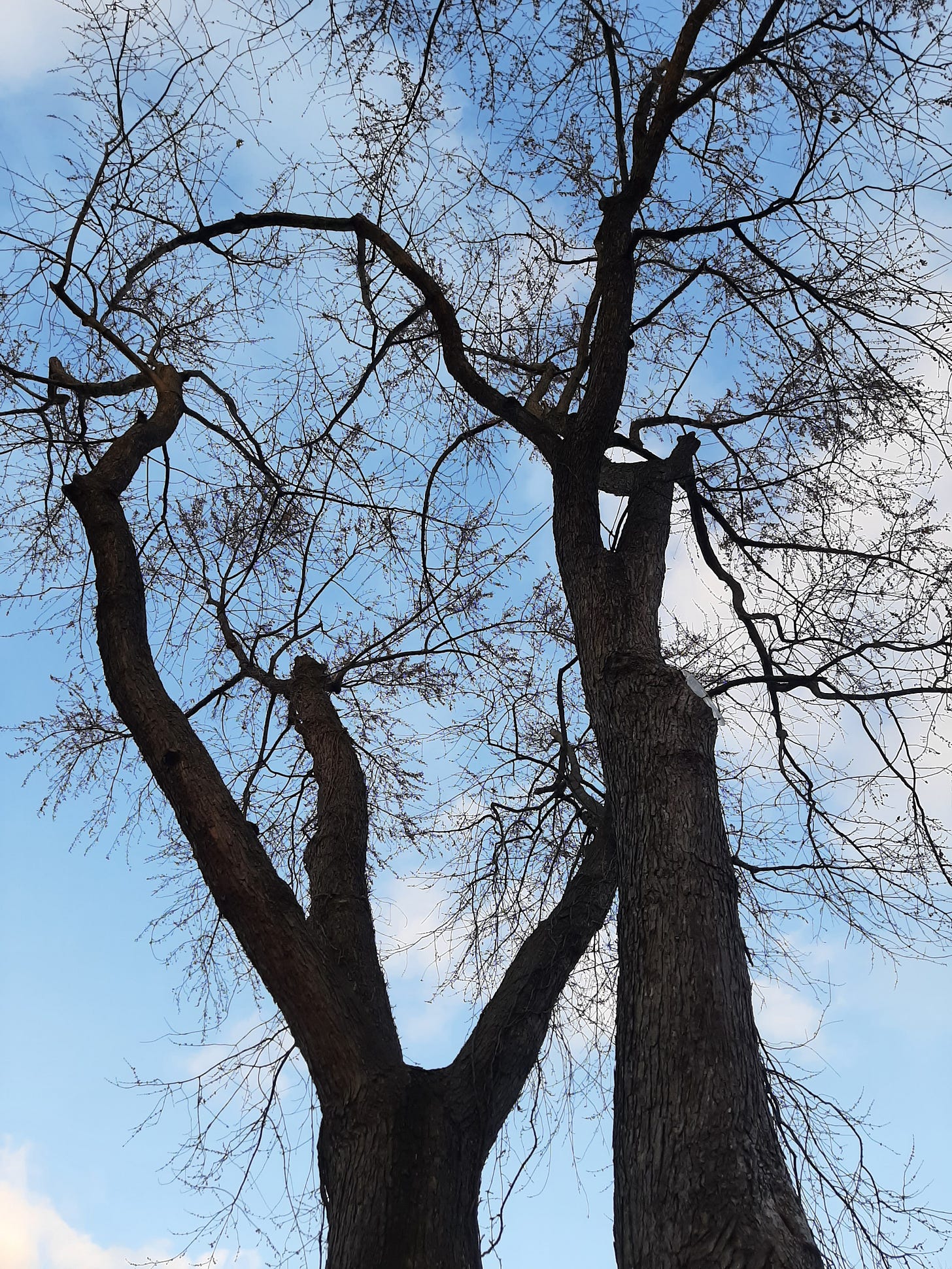Have you ever looked - really looked - at a tree in the dead of winter? With days still short and temperatures about as low as they go here in the northeast US, these amazing giants, these largest living beings in any of our neighborhoods, loom bare and beautiful. I enjoy observing the structure of the tall silver maples in my own backyard this time of year. The massive trunks covered with deeply-fissured bark, the many-angled branches, and the tiny, delicate twigs, all make up the framework of these wonderful “creatures.”
Trees are among the largest organisms on earth, and have existed since the Devonian period, up to 420 million years ago. The tree I am looking at right now, that silver maple I mentioned earlier, has a very long lineage indeed! And now in winter, with nighttime temperatures dipping to near zero some years, it sways in the bitter wind, losing a few small branches now and then, but does not fall. Does not die. It has come back, spring after spring, with new leaves and new seeds.
The adaptations that trees have evolved to help them survive the cold are amazing. Though we think of them as dormant now, there is still water in some of their cells. And if this water were to freeze those cells would die, and so would the tree. But this rarely happens, because of a few crucial factors. First, the majority of the cells that make up the trunk of a tree are dead cells. This is the wood of the tree, and if these cells freeze it does not matter. So freeze they do, every winter. But the living layer of the tree trunk, the phloem, contains cells that must not freeze. So the tree has a couple of strategies to protect this layer from freezing, beginning with getting rid of its leaves in the fall. Leaves are essential to deciduous trees because they “exhale” water in a process called transpiration. This exhalation allows for the movement of water from the roots of the tree up through the trunk and branches, and finally again, to the leaves, where the process of transpiration continues, until the leaves fall. So now, without leaves to continue the cycle of drawing water, the cells in the phloem contain less water. They become partially dehydrated. At the same time, shorter day length has triggered the tree to convert starches to sugar. This creates a natural sort of anti-freeze within the cells, lowering their freezing point. The cells have now become spongier, the fluid within them thickened and sweetened, and less likely to freeze.
So the giant I look at now with admiration and gratitude is armed with millions of years of evolutionary wisdom. It has prepared itself for what it now faces in the dead of winter, and when spring comes it will grace us once again with its leaves. For now though, I look with amazement at the beautiful structure of this magnificent creature. From trunk, to branch, to twig, it represents a wisdom that comes from time and seasons, and speaks the language of survival.
For more about the winter survival strategies of trees see:
https://www.purdue.edu/fnr/extension/what-do-trees-do-in-the-winter/





What strong seeds must have been planted and tended to with loving care in order to grow to the magnificence they are destined to become. The whole cosmos is in a tree. Bless you both for seeing and sharing their beauty at this present moment in time.
You make me appreciate all the more the three giant silver maples standing sentinel in my backyard. They look so vulnerable all naked in winter, every one of their broken or twisted limbs visible. And I worry about the awful wind we have been getting over the past few years. Do the trees really have much defense against that?